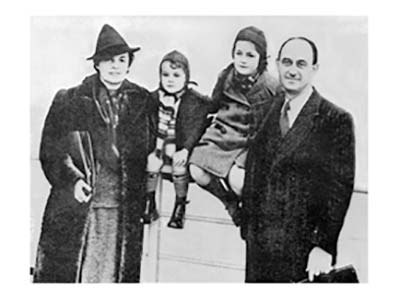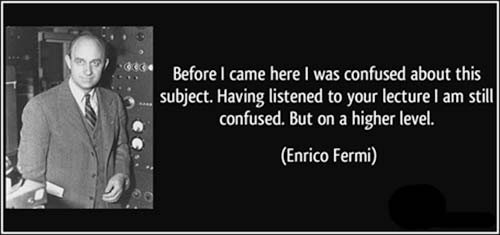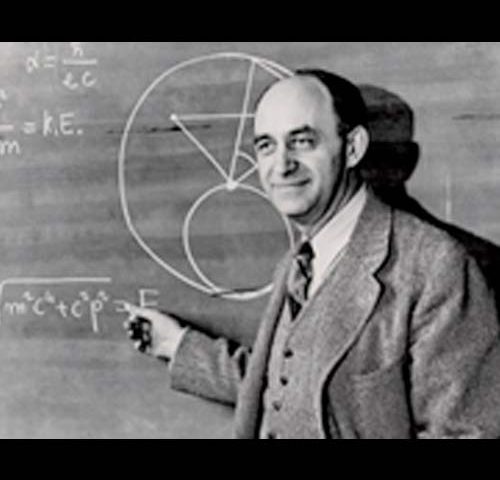What Do You Know About the Father of the Nuclear Age?

Cultivating the Seeds of Peace
September 22, 2017
An Unlikely Portal to the Future
October 13, 2017Our curiosity about the World War II story has not diminished even after seventy-two years. Books are still being published by renowned authors and by newcomers who often have a personal story to tell. Movies, such as Dunkirk and Hacksaw Ridge, realistically portray this mega drama that was played out on a global stage with a colorful cast of characters, a tragic loss of life, and a shocking victory. While I applaud each effort to preserve these stories and our history, I wanted to know more about the people behind the scenes, and I found my inspiration this summer. He was not on the battle field or in the war industries that quickly sprouted in major urban areas throughout the US. Instead, he worked on a secret project that quietly evolved at a remote western location.
This summer I visited the “The Hill.” Formerly a private boy’s school, it was nestled on a sparse mesa at 7,320 feet atop the Pajarito Plateau. Today we know it as Los Alamos, New Mexico. But in November of 1942, it had just been selected as the site of Project Y, a top-secret atomic weapons laboratory directed by Robert Oppenheimer. Soon an elite group of international scientists and physicists would make their way up the treacherous hill from Santa Fe to help develop a potent new weapon, an atomic bomb.
I first traveled there in 2015 and had discovered books and displays that brought the local history to life at the Bradbury Science Museum and the Los Alamos Historical Museum. The scenery was peaceful, and I was soon enchanted by the clear azure skies and panoramic vistas. I could easily visualize the calmness the surroundings provided the harried scientists focused on their demanding deadlines. But there was more to learn about Project Y, and I returned there again in August.
Who were the key scientists that had lived and worked there? How did their families manage to live in such primitive conditions at this quickly constructed, army-built secret town? I already knew some basic facts about Robert Oppenheimer, who headed the project but there were many other renowned scientists working there. Enrico Fermi was the one who most stimulated my curiosity. Called the father of the nuclear age and the pope of physics, he was an exceptional man whose work unlocked the door to the atomic age. Yet I barely knew his name.
Born in Rome, Italy, on September 29, 1901, he was the third child of a close-knit and well-educated family. As a teen he developed a keen interest in math and physics, and his mother, a former teacher, strongly supported his interests. This became an important outlet when his older brother died suddenly. Enrico was always inquisitive and frequently conducted experiments with friends including one to determine the density of Rome’s drinking water. Eventually he attended Scuola Normale Superiore University on a scholarship and graduated magna cum laude four short years later with PhD in Physics.
He rapidly found success both professionally and personally. He became a professor of theoretical physics at the University of Rome, married Laura Capron and they became parents of two children. He continued his pioneering work with atoms, and in 1938 he was awarded the Nobel Prize in physics. His family’s trip to Sweden to accept this award provided them the life-saving opportunity to escape Fascist Italy and move to America where he taught physics at New York’s Columbia University. His research there became the basis for the atom bomb when his experiments produced the first controlled chain reaction in Chicago in 1942. Shortly afterwards, he was asked to join the Manhattan Project, and in 1944, he and his wife became American citizens. By August of that year he had also agreed to join the team as the associate director and consultant at “The Hill.” His family soon followed him there and traveled under an assumed name as the Farmer family.

This summer as I toured the historic buildings on Bath Tub Row and around Ashley Pond, I wondered where the Fermis had lived and how they had adjusted to their unconventional life on “The Hill.” So much had changed since they had gotten married sixteen years before in Rome. What was it like to live there, isolated from the rest of the world and even the citizens of nearby Santa Fe? What was it like to have so much responsibility resting on your research, projections and findings? What was his reaction when he realized how the results changed the course of history? I have many more questions about this highly- respected physics prodigy and his time in Los Alamos. So I am eager to read his wife’s book, Atoms in the Family, My Life with Enrico Fermi to learn more about their life together.
After the war, he returned to the University of Chicago to continue his research at the Institute of Nuclear Studies with a focus on cosmic rays. Sadly his gifted life was cut short when he contracted stomach cancer and died at the young age of fifty-four. He still had so much more wisdom to share with the world.
While he helped unlock the atomic secrets of the universe, his work had a profound personal impact on me. It ended the war. My father came home from the Pacific. I was born nine months later. I am indeed grateful for the life and work of Dr. Enrico Fermi.
It is no good to try to stop knowledge from going forward. Ignorance is never better than knowledge.
Enrico Fermi


